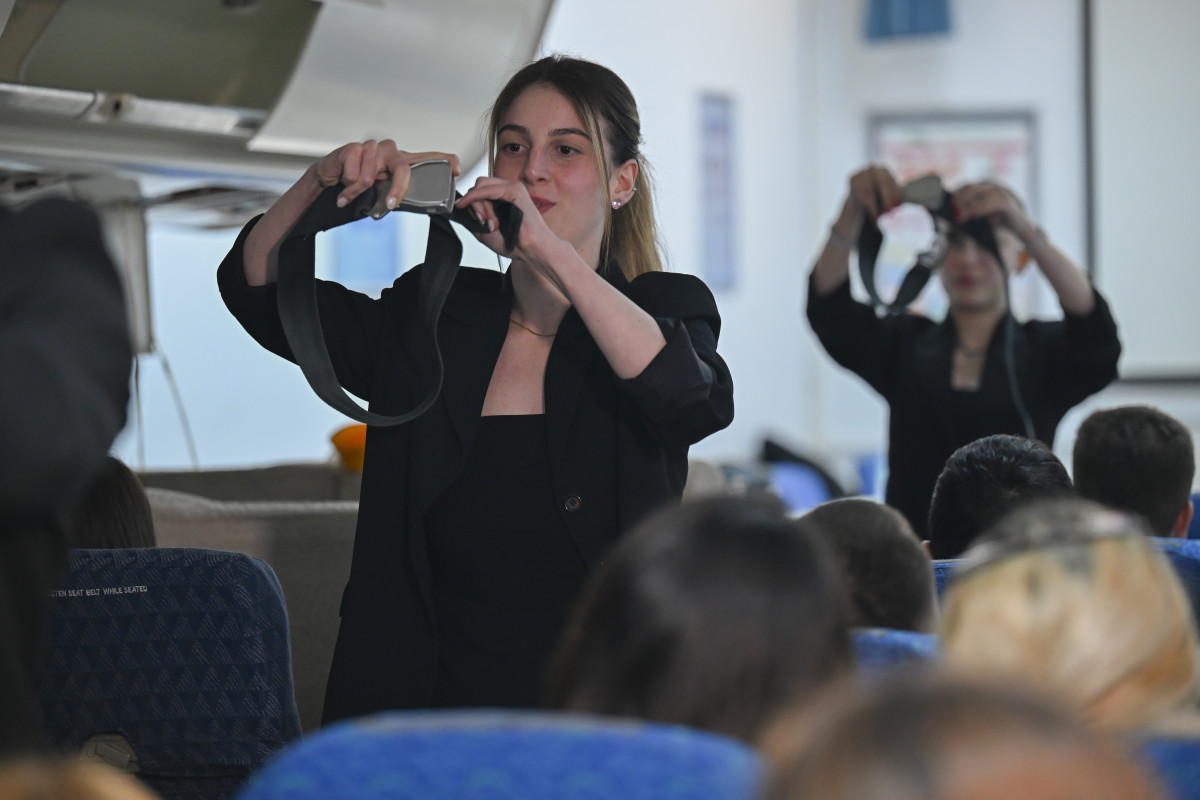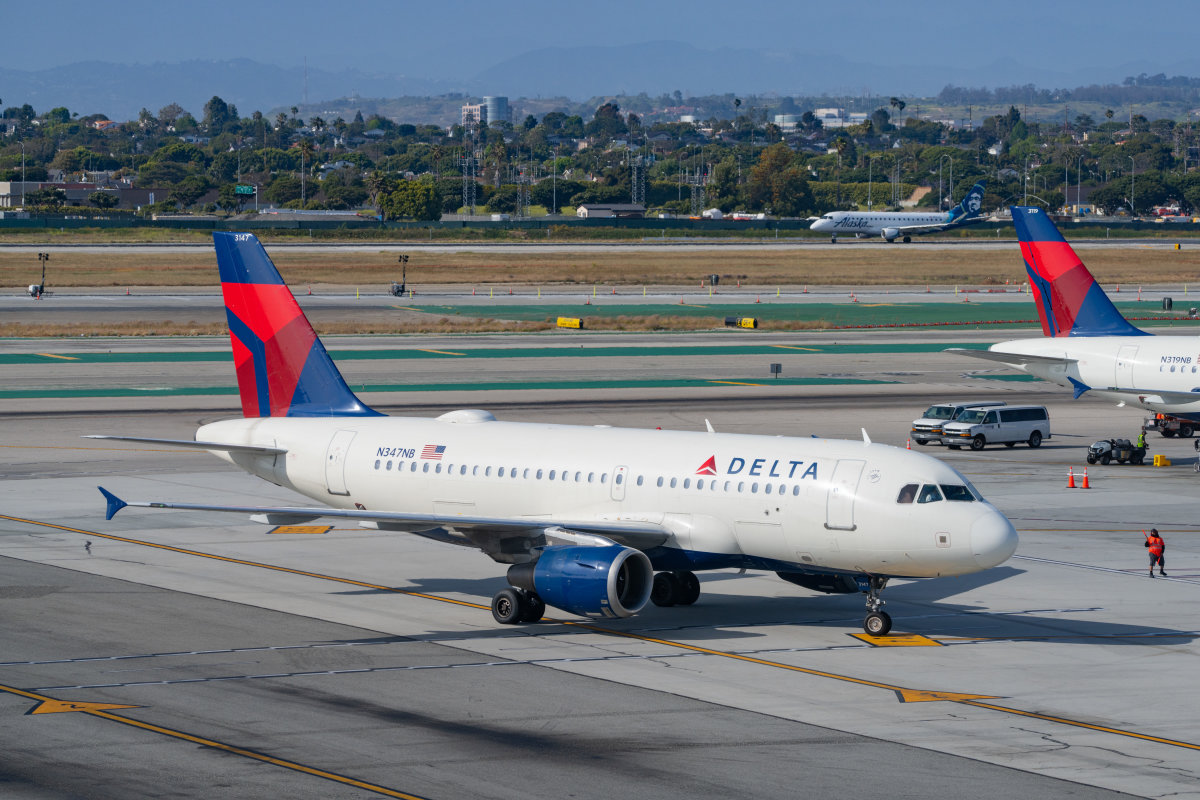
Airplanes (and the airports from which they make berth) can be stressful, hectic places. Nevertheless, they also have an undeniable allure.
Sleek airline logos, elegant staff uniforms, and practiced PA announcements all contribute to a certain air of jet-set intrigue that inspires many travelers to wonder just what it’s like to work on an airplane — especially since employees typically get free standby travel in addition to typical benefits.
Becoming a pilot, of course, takes years of specialized training and countless hours of in-air cockpit experience, neither of which comes cheap. So, for most would-be airline employees, that role is out of reach.
Flight attendant positions, on the other hand, are much more attainable for the average daydreaming airline passenger. They don’t require an expensive specialized education, so anyone with a few years of customer service experience — especially in the high-end hospitality industry — has a decent chance of landing a position with a commercial airline.
Related: Delta pilot salaries: What the world’s biggest airline pays its flightdeck
But just how much do flight attendants make? Do their salaries increase significantly over time? What do their travel perks look like, and what other benefits do they receive?
Here’s what you need to know about working as a flight attendant on a commercial airliner.
How much do flight attendants make in the United States?
The median annual salary for a flight attendant in the U.S. is $68,370, according to the Bureau of Labor Statistics, the Federal Government’s fact-finding agency responsible for collecting and disseminating employment and workforce data. This means that about half of all flight attendants make more than $68k per year, while the other half make less.
An annual salary of $68,370 is about 42.26% higher than the median annual pay for all U.S. workers ($48,060) and is fairly high for a position that falls within the unfortunately named category of unskilled labor (a somewhat offensive misnomer used to describe jobs that don’t require a specialized formal education).
How much do new flight attendants earn?
Between the high pay-to-experience-needed ratio and the free standby travel, flight attendant positions are extremely appealing to many job seekers, but newer flight attendants don’t usually make the near-70K median listed by the BLS.
Once completing training, passing the FAA’s flight attendant test, and receiving a Certificate of Demonstrated Proficiency (more on these later), a new flight attendant starts at the low end of their airline’s pay scale — usually around $30 to $35 per hour.
That pay, however, can go up quite dramatically with experience. By the time a flight attendant has 10 years of airline tenure, wages in the $65–$70 per hour range aren’t at all uncommon.

Flight attendant pay scales and tenure
Every airline is different, but most pay their attendants by seniority based on a standard pay scale. (Individual pay does vary based on performance and whether a particular attendant has special duties or mentors newer crew members.)
For instance, a flight attendant and Reddit user called No_Telephone4961 posted Delta Air Lines’ supposed 2024 flight attendant pay scale in a thread on the r/flightattendants subreddit. The thread suggests that while new attendants start at around $35 per hour, seasoned attendants can make as much as $80
View the original article to see embedded media.
Of course, Delta (DAL) is the world’s largest airline by fleet size and has been around for a long time, so flight attendants there tend to have slightly higher-than-average wages for the industry.
Newer flight attendants can always gain experience at a smaller airline before applying for a position at a larger, legacy airline like Delta or United Airlines (UAL) .
How many flight attendant jobs are there in the U.S.?
According to the BLS, there were about 111,100 flight attendant jobs in the U.S. as of 2022, but this number is expected to grow by 11% by 2032—that's over 12,000 new jobs. This is a very high growth rate compared to most other segments of the labor market, which is projected to grow by 3% overall over that same time frame.
More pay and employment:
- PGA caddie salaries: How much do pro golf's loopers make?
- Information security analyst jobs & what they pay
- Walmart manager salaries after 2024 pay & bonus increase
Do flight attendants get per diem pay and hotel reimbursement?
A flight attendant typically receives per-diem pay (on top of their hourly wages) for meals and incidental expenses whenever they are working away from their home base.
According to most anecdotal reports, per-diem pay rates in the industry typically fall into the $1.50–$3 per hour range. In some cases, per diem pay continues during off-duty hours so long as an attendant is away from home and between shifts.
Additionally, when flight attendants need to stay away from home due to their flight schedule, their evening accommodations and transportation to and from the airport are typically paid for by their airline.
Related: FedEx pilot salary: How much does the world’s largest cargo airline pay?
How do you get a job as a flight attendant? The FA Career path explained
Flight attendant careers aren’t among the most difficult to break into, especially since they don’t require a specialized degree, but there are a number of requisites that can help position a candidate for success in the application process.
Here’s a closer look at what an ideal candidate should have in terms of education, skills, and experience — and what the job track looks like.
Education
Flight attendant jobs, as mentioned above, can be categorized as unskilled labor positions, meaning they don’t require a formal (read expensive) education. The necessary training needed to perform the job is conferred after hiring.
Most positions do require a high school diploma or equivalent, but no collegiate degree or trade certificate is required before a flight attendant is hired (although all flight attendants do need to earn a certificate after they complete their training — more on this below).
Skills
Unskilled labor is as much of a misnomer in this case as it is in most others. Flight attendant positions require a number of important skills, including the following:
- Excellent interpersonal communication abilities
- Spatial awareness
- Time management
- Memorization
- Public speaking
- An in-depth understanding of certain aircraft safety and operation procedures (via on-the-job training)
- The ability to maintain composure during stressful situations and unsavory interactions.
Experience
Airline-specific experience is not mandatory for aspiring flight attendants — customer service and/or hospitality experience, on the other hand, usually is. Many successful applicants have worked previously at high-end restaurants, resorts, hotels, spas, or related facilities.
The ability to complete job duties efficiently while also ensuring that customers are comfortable and have what they need is a must, so those who have demonstrated an ability to do so via relevant past positions definitely have an advantage.

Training
Once hired, a new flight attendant typically completes a rigorous training course at the airline’s training center, which is often located near its headquarters or one of its hubs.
These training programs typically take about six weeks and cover everything a flight attendant needs to know about the job, including in-depth instruction in airplane safety procedures along with guidance on the more customer-service-oriented aspects of the role.
Trainees practice using aircraft emergency equipment, conduct evacuation drills, and complete hands-on run-throughs of other in-flight processes. The training ends with a series of mock flights during which trainees’ proficiency in all aspects of the flight process is evaluated.
Certification
Once training is completed, all would-be flight attendants are required to take and pass a test administered by the Federal Aviation Administration (FAA).
Once this test is passed, the trainee receives a Certificate of Demonstrated Proficiency that renders them eligible to begin working as an attendant on real flights with the airline that hired them.
Subsequent training is typically required for work on different types of aircraft, and newer attendants are usually supervised by more seasoned attendants with years of on-flight experience.
As an attendant gains experience, their responsibilities and specialization tend to increase along with their pay.
Do flight attendants get good benefits?
While specifics can vary considerably between airlines, flight attendants typically receive a standard suite of employee benefits, including employer-sponsored health insurance options, an employer-sponsored 401(k) retirement savings account (usually with some degree of employer matching), paid time off, sick time, and the like.
How does the free standby travel perk work for flight attendants?
Flight attendants (and sometimes their spouses, children, or chosen traveling companions) typically receive free standby travel on their own airline (and often on partner airlines as well).
This perk does, however, come with certain caveats. Because it is only valid for standby travel, flight attendants can only book free travel on empty seats, which means waiting until shortly before takeoff for confirmation that they will be able to travel to their destination (and sometimes needing to wait for subsequent flights if the one they want to take ends up filling with paying passengers at the last minute).
This also means that it can be very difficult to book standby travel on popular flights or during peak travel times, such as the holidays.
Additionally, if multiple “non-rev” (industry speak for non-paying airline employees looking to land standby travel) passengers want seats on the same flight, those with more seniority usually take priority.
These free standby flights also aren’t totally free — attendants typically have to pay a small fee.
Related: Veteran fund manager picks favorite stocks for 2024







